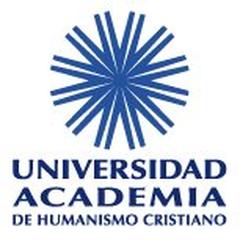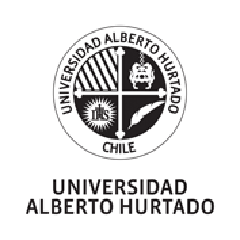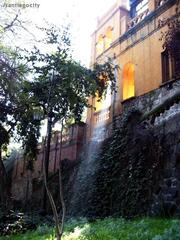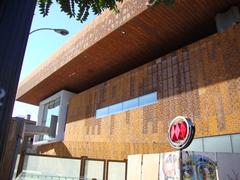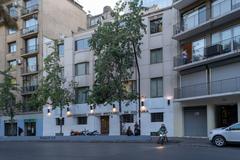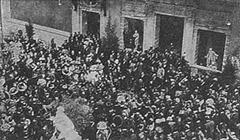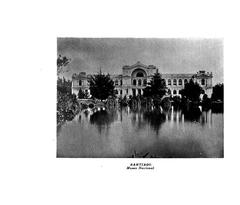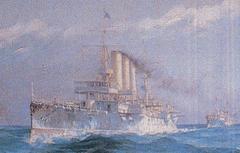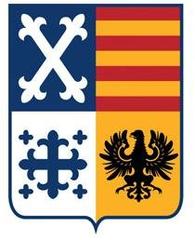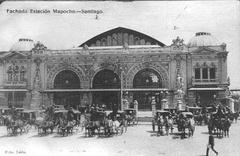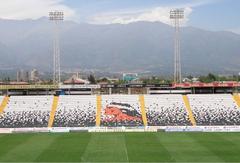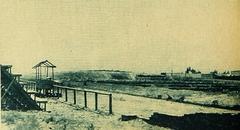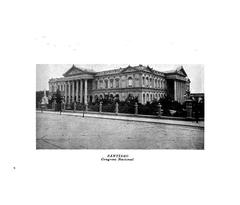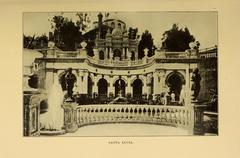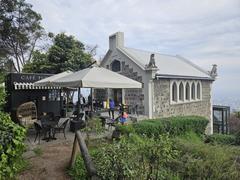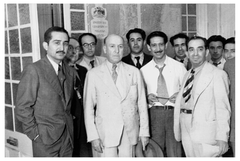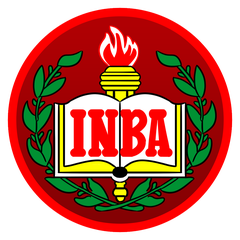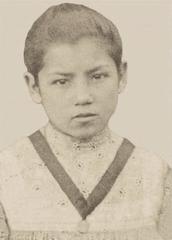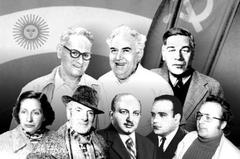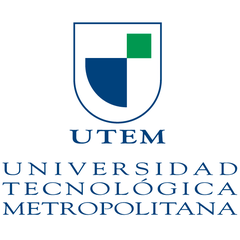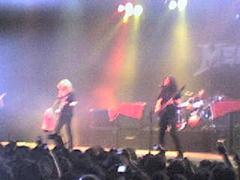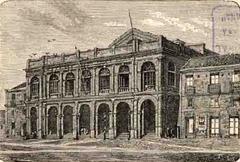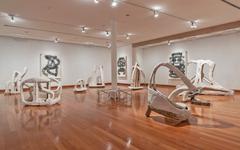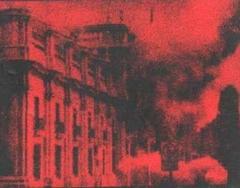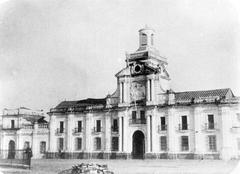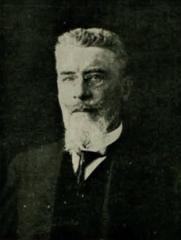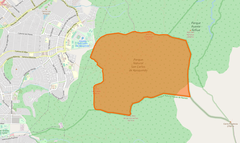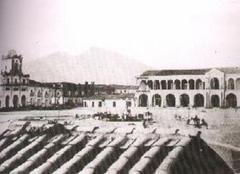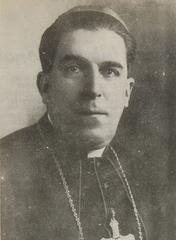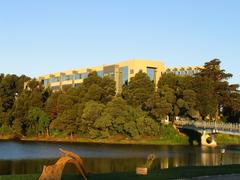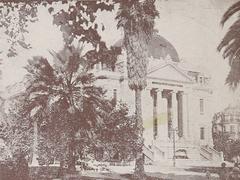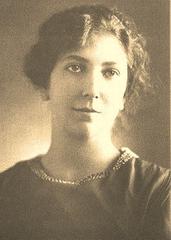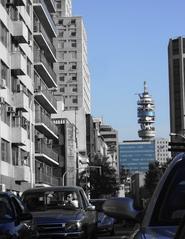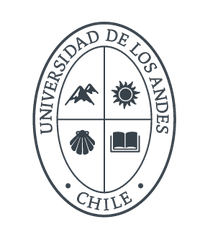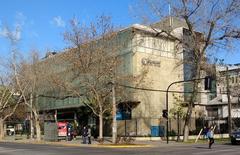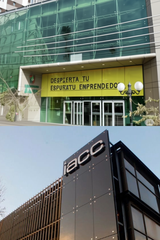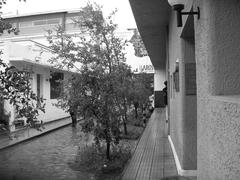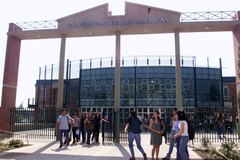Presidente Pedro Aguirre Cerda, Santiago, Chile: Visitor’s Guide to History, Attractions, and Practical Tips
Date: 03/07/2025
Introduction: Why Visit Presidente Pedro Aguirre Cerda?
Located in the vibrant southern sector of Santiago, the commune of Presidente Pedro Aguirre Cerda (PPAC) is a living testament to Chile’s social reformist legacy and urban evolution. Named after President Pedro Aguirre Cerda, a champion of education and labor rights, the area offers a compelling blend of history, culture, and authentic local life. This guide will help you navigate its historical sites, museums, colorful neighborhoods, bustling markets, and community-driven cultural spaces, ensuring a rewarding and insightful visit (academia-lab.com; Wikipedia).
Table of Contents
- The Legacy of Pedro Aguirre Cerda
- Historical Evolution of the Commune
- Key Cultural Sites and Historical Landmarks
- Neighborhoods and Markets
- Urban Parks and Public Spaces
- Visiting Hours, Tickets, and Accessibility
- Transportation and Getting Around
- Community Life and Local Culture
- Practical Tips and Safety
- Frequently Asked Questions (FAQ)
- Planning Your Visit: Top Recommendations
- Conclusion and Next Steps
- References
The Legacy of Pedro Aguirre Cerda
Pedro Aguirre Cerda (1879–1941) was a transformative Chilean statesman who led the country as president from 1938 to 1941. Born in Pocuro, Calle Larga, he rose from modest origins to become a lawyer, educator, and advocate for social justice. His presidency was marked by initiatives that expanded public education, improved workers’ rights, and modernized infrastructure. The slogan “Gobernar es educar” (“To govern is to educate”) encapsulates his visionary leadership (academia-lab.com).
Historical Evolution of the Commune
Originally part of the Ochagavía sector and later the broader San Miguel commune, Presidente Pedro Aguirre Cerda became a distinct administrative entity on March 17, 1981. The creation of the commune reflected Santiago’s mid-20th-century urban expansion and efforts to deliver more responsive governance to growing populations (chile.gob.cl; municipalidadpedroaguirrecerda.cl). The area’s layout and infrastructure mirror the era’s push for accessible housing and community services.
Key Cultural Sites and Historical Landmarks
Museo y Centro Cultural Presidente Pedro Aguirre Cerda
Housed in the president’s meticulously preserved birthplace in Pocuro, Calle Larga, the museum showcases original documents, photographs, and interactive exhibits chronicling Aguirre Cerda’s life and legacy. The adobe-walled structure is a fine example of 19th-century rural Chilean architecture.
- Visiting Hours: Tuesday to Saturday, 10:00–13:30 and 15:00–19:00. Closed Sundays and holidays.
- Admission: Free for all visitors.
- Guided Tours: Available on request; contact in advance for group visits or special events.
- Accessibility: Basic features provided; contact ahead for assistance.
- Getting There: Via Metro Line 6 (“Presidente Pedro Aguirre Cerda” station) and local buses (whichmuseum.com; chilecultura.gob.cl).
Monument to Pedro Aguirre Cerda in Parque Almagro
Located in a prominent Santiago park, this monument by Lorenzo Berg is a striking tribute to the former president, featuring a statue and reflecting pool. It’s a popular stop on historical walking tours and is accessible 24/7 with no entry fee (gpsmycity.com).
Neighborhoods and Markets
La Victoria
Founded in 1957 through grassroots urbanization, La Victoria is a neighborhood renowned for its history of social activism, vibrant murals, and community pride (Wikipedia). Walking its streets offers a firsthand look at Chile’s enduring spirit of collective action.
Lo Valledor Market
As Santiago’s largest wholesale and retail food market, Lo Valledor is a bustling hub for fresh produce, seafood, and traditional Chilean fare. Open daily from 5:00 AM to 3:00 PM, it’s best experienced in the early morning when local commerce is at its liveliest (lovalledor.cl).
Urban Parks and Public Spaces
PPAC is dotted with green spaces like Parque André Jarlan and Parque La Bandera, which host sports facilities, local events, and offer a peaceful retreat from the city’s bustle. These parks, along with smaller plazas throughout the commune, are open daily (usually 8:00 AM–8:00 PM) and are free to enter.
Visiting Hours, Tickets, and Accessibility
- Museo y Centro Cultural: Tuesday–Saturday, 10:00–13:30 and 15:00–19:00; free entry.
- Lo Valledor Market: Daily, 5:00 AM–3:00 PM; free entry for visitors.
- Parks: Open daily, 8:00 AM–8:00 PM; free entry.
- Monument (Parque Almagro): Open 24/7; free entry.
- Cultural Centers: Vary by event; check official sites for schedules and fees (centro cultural PAC).
Accessibility: Most main attractions and transit options offer basic accessibility features; confirm with sites for specific requirements.
Transportation and Getting Around
- Metro: Line 6 (“Presidente Pedro Aguirre Cerda”) links the commune directly to Santiago’s network (Metro Santiago).
- Buses: Extensive routes connect to the city center and surrounding neighborhoods.
- Bip! Card: Required for metro and bus rides; available at stations.
- Taxis & Ride-hailing: Black-and-yellow taxis, Uber, Beat, and Cabify operate widely.
- Cycling & Walking: The commune’s flat layout and parks make it suitable for pedestrians and cyclists.
For airport access, use shuttle buses or ride-hailing services from Arturo Merino Benítez International Airport, about 15 km away (Rough Guides).
Community Life and Local Culture
PPAC’s working-class roots are evident in its strong sense of community, social activism, and the prominence of local festivals, murals, and markets. The area’s identity is shaped by its commitment to education and cultural expression, a legacy of Aguirre Cerda’s social vision. Community centers offer arts workshops, educational programs, and events that are open to residents and visitors alike (chilecultura.gob.cl).
Practical Tips and Safety
- Safety: The area is generally safe during the day; exercise standard urban caution, especially at night.
- Language: Spanish is predominant; translation apps are helpful.
- Payment: Cash is preferred in markets; Bip! card for transit.
- Connectivity: Public Wi-Fi is available in many parks and community centers.
- Dress and Etiquette: Casual but neat dress is appreciated; polite greetings are customary.
Frequently Asked Questions (FAQ)
Q: What are the opening hours for the Museo y Centro Cultural Presidente Pedro Aguirre Cerda?
A: Tuesday–Saturday, 10:00–13:30 and 15:00–19:00. Closed Sundays and holidays.
Q: Is there an admission fee for the museum or markets?
A: No, both offer free entry.
Q: How do I reach PPAC by public transport?
A: Take Metro Line 6 to “Presidente Pedro Aguirre Cerda” or use local buses.
Q: Are guided tours available?
A: Occasionally, by prior arrangement at the museum or through community organizations.
Q: Is the area accessible for people with disabilities?
A: Most primary sites offer basic accessibility; it’s best to contact in advance for specific needs.
Planning Your Visit: Top Recommendations
- Arrive early at Lo Valledor market for the most authentic experience.
- Check for seasonal cultural programs at the museum and local centers.
- Explore La Victoria’s murals and community events for a deeper cultural insight.
- Use public transportation and the Bip! card for efficient city travel.
- Practice urban safety and respect local customs for a pleasant visit.
Conclusion and Next Steps
Presidente Pedro Aguirre Cerda invites visitors to connect with Chile’s social and political heritage while experiencing the everyday vibrancy of Santiago’s southern neighborhoods. From the historical museum and community-driven cultural centers to bustling markets and expressive murals, the commune offers a multifaceted look at Chilean identity and progress. For updated information, event schedules, and transit tips, download the Audiala app and follow official social media channels.
References and Further Reading
- Academia Lab
- Chile Cultura
- Which Museum
- GPS My City
- Government of Chile
- Municipalidad de Pedro Aguirre Cerda
- Museo y Centro Cultural Presidente Pedro Aguirre Cerda Official Page
- Santiago Metro Map and Schedules
- Santiago Tourism Official Website
- Lo Valledor Market Official Site
- Wikipedia: Pedro Aguirre Cerda
- DB City
- Rough Guides
